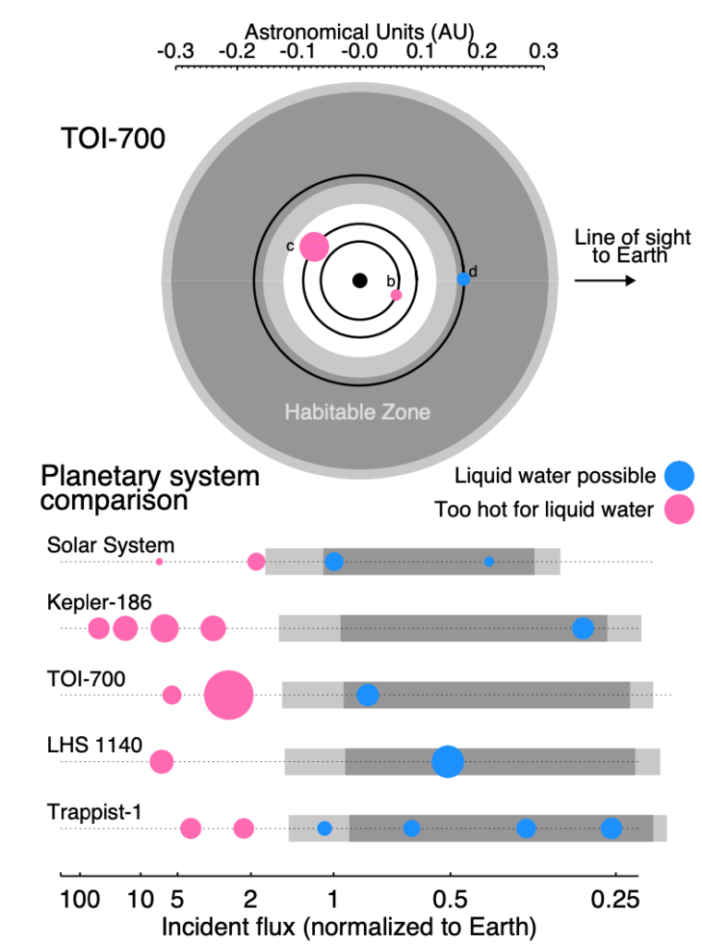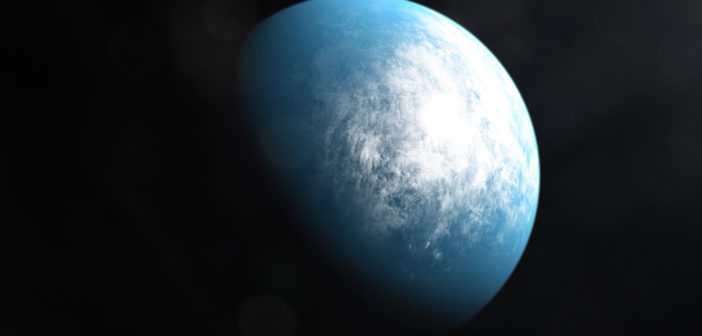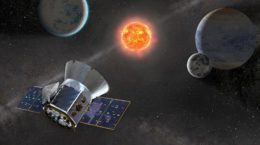Editor’s note: Astrobites is a graduate-student-run organization that digests astrophysical literature for undergraduate students. As part of the partnership between the AAS and astrobites, we occasionally repost astrobites content here at AAS Nova. We hope you enjoy this post from astrobites; the original can be viewed at astrobites.org.
Title: The First Habitable Zone Earth-sized Planet from TESS. I: Validation of the TOI-700 System
Authors: Emily A. Gilbert, Thomas Barclay, Joshua E. Schlieder, et al.
First Author’s Institution: University of Chicago
Status: Submitted to AJ
Searching for Planets in All the Right Places
Some of the biggest questions we humans like to ask are, “Is there life out there in the universe?” and “Are there other solar systems out there with planets just like ours?” To answer these questions, astronomers have built larger and more advanced telescopes to try to find planets outside of our own neighborhood, specifically those similar to our own world. The Kepler mission was launched in 2009 specifically to search for these kinds of planets: Earth-sized planets in Earth-like orbits around Sun-like stars in order to study how common they are in the universe. The mission has made many amazing discoveries, such as an exoplanet with the density of Earth, a planet in a binary star system, and the first Earth-sized planet in the habitable zone of its star that orbits around an M-dwarf star that is about half the size of the Sun. Kepler’s extended mission, K2, focuses on low-mass stars and has led to the discovery of hundreds of small planets, some even in the habitable zone of their stars. Together, Kepler and the K2 mission have found over 3,000 new exoplanets.
Exoplanets are very small and very far away, so it is very difficult to find them. Astronomers use four methods: the transit method (which looks at how much a star dims as a planet goes in front of it, or eclipses it), the wobble method (which looks at how a planet and a star move around a common center of mass), direct imaging (which means taking a picture of the planet, straightforward but very difficult and limiting), and microlensing (which happens when light from a distant star bends around a star/planet system). TESS, or the Transiting Exoplanet Survey Satellite, was launched in 2018 and was designed to search for small planets around the Sun’s nearest neighbors using the transit method. In today’s paper, we discuss the first results of Earth-sized planets found in the habitable zone of an M-dwarf star, planets contained in an odd planetary trio.
The Host Star

The light curves observed by TESS. The pink line represents how much the star was expected to be dimmed by the eclipsing planet and the blue is the actual data. [Gilbert et al. 2020]
Goldilocks (Zone) and the Three Planets
By analyzing how much the star dimmed as the planets went around it, the team determined that it hosts three planets. From the inner to the outer planet (respectively called TOI 700 b, TOI 700 c, and TOI 700 d), they have radii of 1.01 ± 0.09, 2.63 ± 0.4, and 1.19 ± 0.11 Earth radii. Figure 1 shows how much the planets dim the light of the star. TOI 700 b and d are likely Earth-sized while TOI 700 c is a sub-Neptunian-type planet. TOI 700 d receives about 90% of the energy that the Earth does from the Sun, which places it in the habitable zone of the star. After finding these planets, the team performed tests with many different software packages in order to verify their discoveries. Each of the three planets passed these tests with a false-alarm probability (the probability that the signal is due to something else like instrument noise) of less than 1%. The masses of the planets were determined to be ~1.07 Earth masses, ~7.48 Earth masses, and ~1.72 Earth masses for planets b, c, and d respectively.
So How Does One Make a Neptune Sandwich…?
The fact that the largest planet is in the middle of this system is a bit puzzling. Usually planets in a given system have similar sizes — and in the case of our solar system, the inner planets are small and rocky, while the outer planets are larger and gaseous. In this system, the low-density gas planet is sandwiched between the higher-density rocky planets with similar masses. Figure 2 shows the planet in comparison to other systems. The team postulates that this could have come from the two inner planets forming faster and accreting significant gaseous envelopes and the outer one forming more slowly and accreting less gas, then the innermost planet loses its envelope somehow. It is also possible that the middle planet formed outside the outermost planet but migrated inward somehow, but how this could happen isn’t clear. This strange system may be difficult to explain, but it provides a rich laboratory for exploring the formation mechanisms of complex multi-planet systems.

Figure 2: The TOI 700 planets compared to other known systems. The bottom axis shows flux (or energy received by the planets) compared to Earth’s and the top axis shows distance. [Gilbert et al. 2020]
About the author, Haley Wahl:
I’m a third year grad student at West Virginia University and my main research area is pulsars. I’m currently working with the NANOGrav collaboration (a collaboration which is part of a worldwide effort to detect gravitational waves with pulsars) on polarization calibration. In my set of 45 millisecond pulsars, I’m looking at how the rotation measure (how much the light from the star is rotated by the interstellar medium on its way to us) changes over time, which can tell us about the variation of the galactic magnetic field. I’m mainly interested in pulsar emission and the weird things we see pulsars do! In addition to doing research, I’m also a huge fan of running, baking, reading, watching movies, and I LOVE dogs!


1 Comment
Pingback: From astrobites: “The TESS Mission’s First Earth-Like Planet Found in an Interesting Trio” | sciencesprings